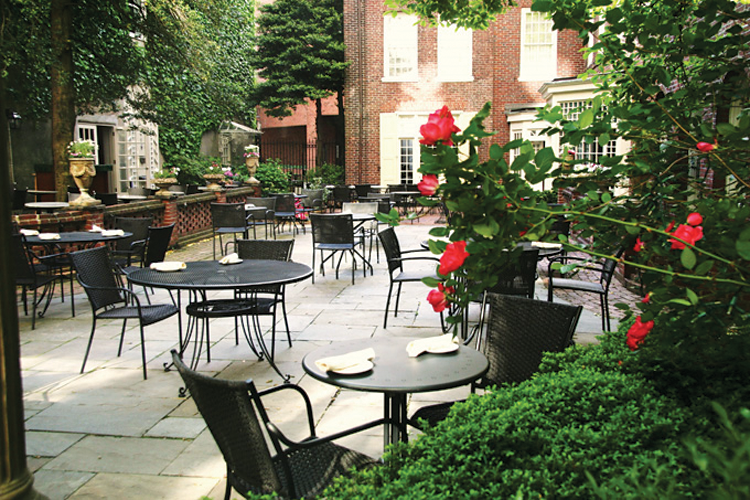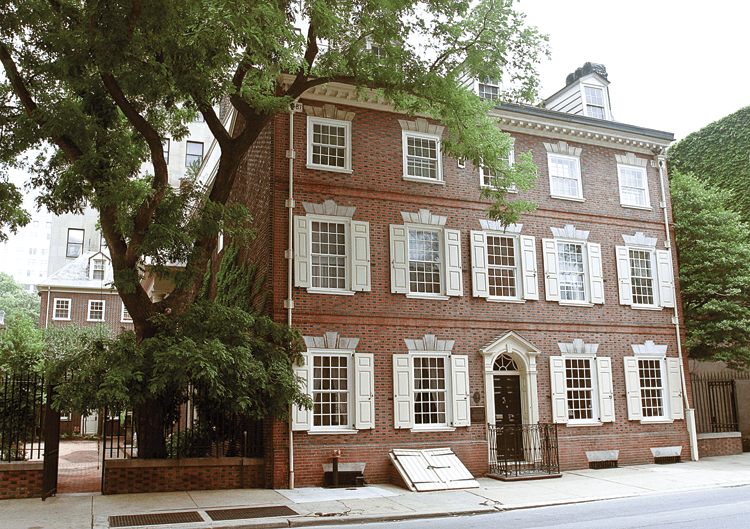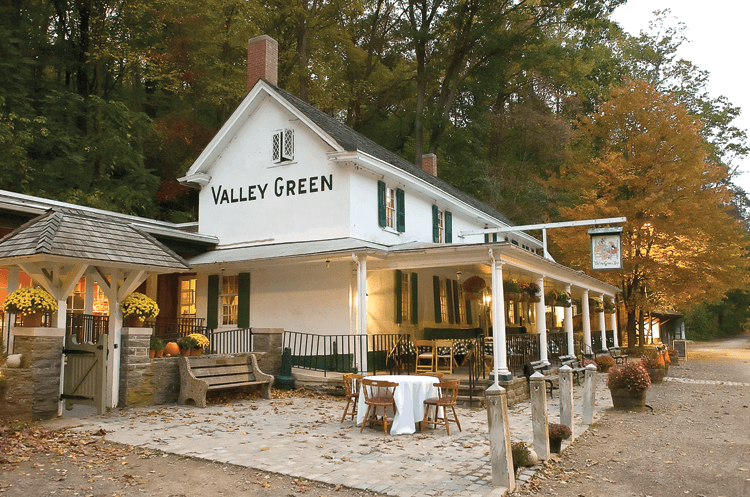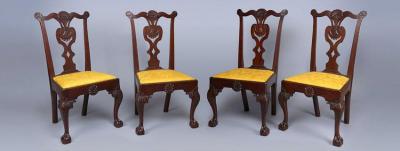Dining in Historic Philadelphia

- Fig. 1: Established in 1893, Philadelphia’s Reading Terminal Market is the nation’s oldest continuously operating farmers market. Visitors enjoy virtually every type of cuisine: Southern, Asian, Middle Eastern, Pennsylvania Dutch and Philly favorites such as roast pork sandwiches. Photography by A. Sinagoga for Visit Philadelphia™
A terrific introduction to Philly’s food is the Reading Terminal Market (Fig. 1), our nation’s oldest continually operating farmers market. It’s right next door to the city’s convention center, the venue for the Philadelphia Antiques Show (April 26–29), and the famed Philadelphia Flower Show held annually in March. The market houses more than eighty unique businesses, three of which are run by descendants of stallholders who were among the first merchants to trade there when it opened more than 110 years ago. Sit-down eateries are scattered throughout. Among them is DiNic’s, whose Roast Pork and Beef holds the honor of being named the best sandwich in America by the Travel Channel.
Nearby is Philly’s Chinatown. Start at the colorful Friendship Arch at 10th and Arch Streets and work your way through streets of restaurants and stores that represent a mix of cultures from Hong Kong to Fujianese, with a sprinkling of hipster thrown in for good measure. Enjoy steaming platters of hand-stretched noodles, dim sum, salt-baked shrimp, and its famed duck at the Sang Kee Peking Duck House, and dine on the freshest seafood at Tai Lake restaurant. Many restaurants in the area are open late.
True American history is the ambiance of Philly’s cobblestoned “Antiques Row” (Pine Street, between South Broad and 9th Street), where you can browse and purchase antiques and art at shops such as M. Finkel & Daughter, also exhibiting at the Philadelphia Antiques Show. Don’t neglect the restaurants here either. Mixto offers Cuban, Latin American, and Caribbean cuisine, while Giorgio is a rustic Italian trattoria that won’t disappoint.
If you are visiting Washington Square or historic Independence Park, walk to the nearby M restaurant in the National Historic Landmark Morris House Hotel (built 1787) (Fig. 2). Enjoy drinks or intimate dining in their courtyard patio within a formal garden. The M, which specializes in “seed-to-table” locally harvested foods, also offers dinner specials if attending the nearby theaters.
A southbound stroll through the Italian Market leads you to 9th and Passyunk, home of the famous—though infamous might be nearer the mark—Philly cheese steak. For the real thing, avoid the touristy Geno’s and Pat’s located there and instead head to Jim’s Steaks at 400 South Street or Steve’s Prince of Steaks at 41 South 16th Street, midway between City Hall and Rittenhouse Square. (And yes, the real thing does involve Cheez Whiz!) If you’ve got a sweet tooth, you’re in the right part of town. Isgro’s Fine Pastries has been producing mouthwatering desserts for more than a hundred years. Choose from a staggering display of cookies, tarts, and traditional Italian sweets, including cannolis that are hand-filled to order.
The Granite Hill restaurant, in the Philadelphia Museum Art, and the Garden Restaurant at the Barnes Foundation’s spectacular new venue along the Benjamin Franklin Parkway allow you to combine two passions: fine art and fine dining. Both restaurants are managed by Stephen Starr, the founding father of the city’s hottest restaurants. Nearby Vernick Food & Drink, just off Rittenhouse Square, is known for its “simple, yet refined” food. The menu changes frequently, but their oyster or sea urchin dishes are a must-try.
Any survey of Philadelphia’s historic dining options would be less than complete if it did not include the wonderful City Tavern. Established in 1773, this eatery specializes in authentic interpretations of meals the Founding Fathers actually ate here. Be sure to reserve in advance and ask to be seated in one of the stately upstairs dining rooms.
If heading out of the city, consider stopping at the Valley Green Inn (Fig. 3), which sits on land purchased in 1685 from William Penn, and is just twelve miles from the convention center. The hotel was built during 1850–1851, the same time the Wissahickon Turnpike (Lincoln Drive) was being completed, which brought visitors into the Valley by carriage and horseback to view the scenery. The scenery is as picturesque as ever at any time of year, and the hotel offers an added bonus: dogs are welcome at the bar every Tuesday night from 5 to 8 p.m.
Steve Trombetti is a member of the Society of American Travel Writers.































